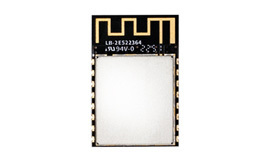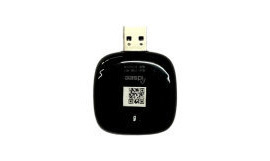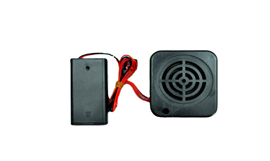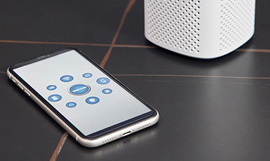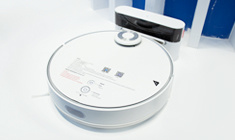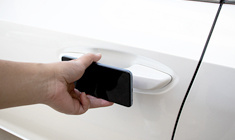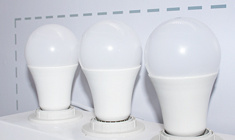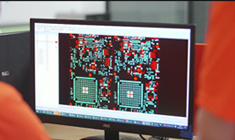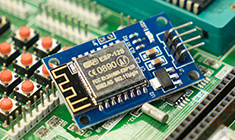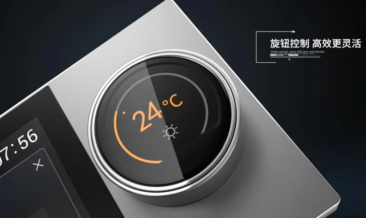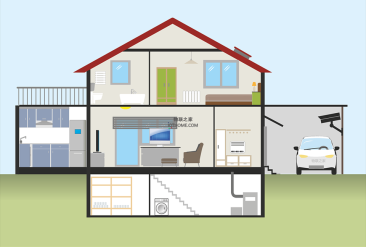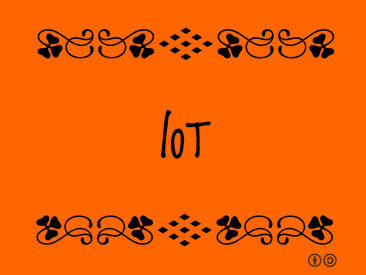
Why IoT protocols are the foundation of smart homes
Release Time:
2022-01-05
How many smart home devices do you have? If you look around, you probably won't find much; maybe you have a smart doorbell, a voice-activated assistant, or a connected medical device. While most of us can probably count the number of smart home devices in our homes on one hand, they are increasi
How many smart home devices do you have? If you look around, you probably won't find much; maybe you have a smart doorbell, a voice-activated assistant, or a connected medical device. While most of us can probably count the number of smart home devices in our homes on one hand, they are increasingly becoming part of our everyday lives. In fact, the smart home market (worth $55.65 billion in 2016) is expected to soar to $174.24 billion by 2025.
When you are only using a few IoT devices, you do not need to use common IoT protocols or data communication standards to manage the ecosystem. After all, your doorbell has no reason to "talk" to your coffee maker, and having two different apps to manage two different devices isn't a huge hassle.
However, as IoT technology develops and our homes become more connected, we will need interaction between all devices, their controllers, and local wireless connectivity systems (e.g. Wi-Fi, Bluetooth), otherwise, typical The IoT ecosystem will not be as smooth as it should be. Isn't the purpose of smart home just to make our life easier?
Why do we need to build a common IoT protocol?
Since there is no universally accepted protocol for data communication, smart devices manufactured by different brands often speak different languages, which makes it difficult for devices in an IoT ecosystem to communicate with each other, hindering semantic interoperability. This poor interoperability reduces the convenience and efficiency these devices are supposed to provide users.
To ensure a robust IoT ecosystem, some consumers and businesses may purchase a range of devices from the same brand, for example, a homeowner may upgrade their home with a refrigerator, washer and dryer of the same brand, and then replace it with a smart The mobile phone controls all these devices. However, these devices still need to connect to the user's home Wi-Fi in a plug-and-play manner for easy setup. From here, devices need to stay connected effortlessly to ensure they are always ready to work when the user needs them.
Users may at some point want to integrate another brand's product into their IoT ecosystem, which raises the issue of data communication between devices. Many smaller devices are designed to be self-installed by the user, and if the installation and integration is not simple enough, the user will experience more headaches than expected. Additionally, if devices don't follow the same cybersecurity protocols, there can be holes in the smart network, allowing hackers to steal information or make changes to the system.
IoT protocols will benefit both device makers and users
在Jabil的2020年智能家居技术趋势调查中, 99%的智能家居产品公司决策者认为,制定数据通信标准是有价值的。对科技公司而言,特定的潜在利益是广泛的。物联网协议将:
▲推动建立管理所有连网设备的集线器的机会
▲加快用户采用智能家居和商业设备的速度,因为用户不必面对设备集成方面的挑战
▲让公司专注于自己的核心优势,而不必担心连接问题
▲通过与其他类型的已连网设备关联,使品牌所有者能够捕获丰富的数据集
▲增加追加销售和交叉销售的机会
当然,数据通信标准也将使最终用户受益。理想情况下,用户插入新设备并打开后,该设备将与本地网络连接,无缝加入物联网生态系统。这种简单、用户友好的网络协议策略将允许用户轻松地自行安装连网设备。
此外,智能家居市场正在迅速增长。在短短的两年内,有57%的调查参与者看到了整体市场机会,翻了一番还多。事实上,机会的增长速度超过了三分之一受访者的预期。
这意味着巩固这些标准的最佳时机现在已经到来。在某个时候,房屋或建筑物中的大多数(甚至全部)设备都是智能的。为这些产品建立通用语言将确保最高质量的物联网连接,使新设备能够轻松地集成到智能家居或网络中,并且可以和谐地协同工作。
开发物联网协议:正在进行的工作
为了实现完全互联的物联网生态系统,行业专家需要在所有设备(无论是在家中还是在汽车中)之间找到或开发一种共通性,以建立一种语言,使不同品牌的设备可以在整个物联网生态系统中相互通信。此外,这些标准应具有共同的安全协议,以确保没有网络安全漏洞。
Progress has been made in this regard. Tech giants Amazon, Google and Apple have teamed up to create a smart home standard that will run through the Zigbee Alliance. Zigbee provides a stable IoT platform and various technologies, such as their full stack, an advanced IoT communication protocol specification based on IEEE 802.15.4. It is used to create personal area networks from small, low-power digital radios, suitable for a wide range of applications from home automation to personal electronic health records (EHR).
Called the IP Connected Home, the project aims to simplify development for device makers and improve compatibility for consumers. The project is dedicated to making smart home devices safe, secure and seamless to use. By building on the Internet Protocol (IP), it aims to enable communication between smart home devices, mobile applications, and cloud services, and defines a specific set of IP-based network technologies for device authentication.
It's a good start, but smart home manufacturers still need to make some key decisions before these standards can be finalized.
Different Types of IoT Protocols
One of these decisions includes identifying IoT protocols.
Bluetooth: A short-range communication technology integrated into most mobile devices, thus offering major advantages to personal products. This technology is fundamental to the Internet of Things due to its scalability, low power consumption and flexibility to adapt to market innovations. Important protocols for IoT applications are Bluetooth Low Energy (BLE) and Bluetooth Smart.
Wi-Fi: Wireless connection technology for devices. It provides fast data transfer and can handle large amounts of data. This is the most popular connection type in a LAN environment.
ZigBee: A low-power, low-data-rate wireless network primarily used in industrial applications. By creating a common language for the Internet of Things, the ZigBee Alliance enables smart objects to work securely on any network and interact with each other seamlessly.
Z-Wave: A wireless communication protocol primarily used in home automation. It is a mesh network that uses low-energy radio waves to communicate between home appliances, enabling wireless control of home appliances and other devices such as lighting controls, security systems, and thermostats.

Guangdong Joinet IOT Technology Co.,Ltd
Manufacturing Base:
Joinet Technology Park,No. 168 Tanlong North Road,Tanzhou Town,Zhongshan City,Guangdong Province,China
Pre Sales Hotline:19966308713 13823973022
Switchboard:0760-8663 0003 (transferred) 523
Pre Sales Email:sw@znaiot.com


Contact Us:
Looking forward to your call anytime



